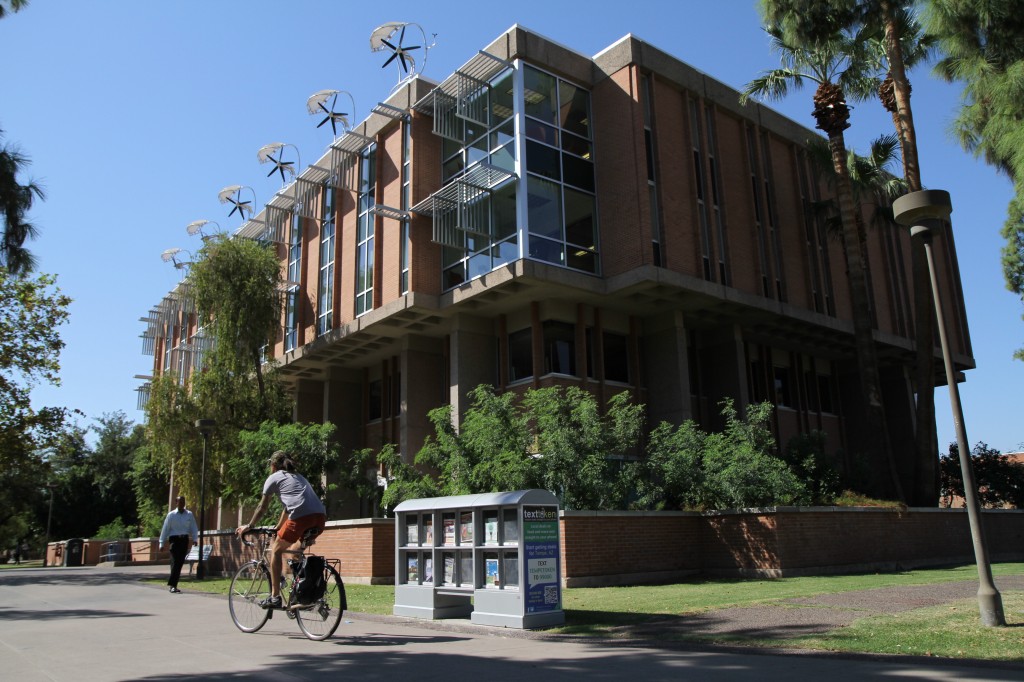We all know Wrigley Hall is sustainable and energy-efficient—but what about the Energizer Bunnies® inside the building?
Sustainability is not just about technology, economics, and biodiversity. It’s about people, too. ASU’s University Sustainability Practices knows that sustainable behavior is just as important as green buildings. That’s why it’s organized the Wrigley Building Energy Challenge from February 1 through April 30.
The Wrigley Building Energy Challenge aims to reduce energy consumption through the combined efforts made by the people inside the building: students, sustainability scientists, staff, and faculty. The main goal of the challenge—other than reducing energy usage—is to inspire energy efficiency through behavioral change, not through building modifications.
“We can conserve a significant amount of energy by using technologies like occupancy sensors and automated controls, but energy reduction can also be realized through behavior change,” says Betty Lombardo, University Sustainability Practices manager. “The goal of this competition is to improve our awareness of energy conservation with simple changes in how we use our building. Focused, intentional energy conservation is one of our principled practices for sustainability.”
But why save energy? Isn’t it free-flowing and abundant? Well, like all things, energy comes at a price—and energy’s prices are rising. The power you consume also creates emissions; those nasty particles that warm the Earth. By lessening our energy use, we can greatly limit our negative impact on our environment and economy.
Wrigley Hall’s tenants hope to reduce the 2012 average daily energy consumption (46.4 kWh) by 10 percent so that this year’s average daily consumption will be 41.76 kWh or lower.
Back in 2010, Wrigley Hall’s energy consumption was 66.8 kWh. In 2011, that number was 45.9 kWh. With energy-saving tactics like turning off the lights when not in use and taking the stairs instead of the elevator, Wrigley Hall’s 2013 energy consumption could be the lowest ever. And if we continued our energy-saving behavior not only at Wrigley Hall but across campus, ASU will easily reach its goal of becoming carbon neutral by 2025.
Don’t forget: your energy-saving behavior can make a difference at work and home, too. Lead by example and the small changes we make together can have a powerful effect.
If you have an awesome, knock-your-socks-off energy-saving idea, share it with Betty Lombardo (betty.lombardo@asu.edu) by April 26 and you could win a $25 gift card to ASU’s Bookstore.
Learn some energy-saving tips.
By Natalie Muilenberg
Editor Assistant, Global Institute of Sustainability
nmuilenb@asu.edu
